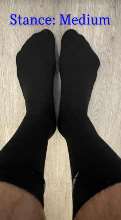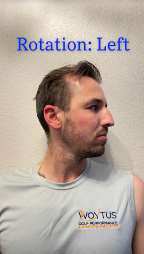Balance Training
A person’s ability to balance depends on the collection of information produced via three systems. The three systems include: visual, proprioception, and vestibular. There are a number of factors that lead to reduced function of these systems, but the body is resilient enough to compensate for a damaged system by enhancing another.
-
Visual
Most people rely on visual information coming in from their surroundings as the primary source of information used to help with balancing. People with a visual reliance for balance feel more unsteady during situations when they can’t focus on a specific object in their surroundings.
o (examples: eyes open versus eyes closed, dim lit rooms, areas people aren’t familiar with)
Challenging Your Visual System
Begin with eyes open then progress to eyes closed for a challenge


Proprioception
A sensation of body awareness received from various structures located throughout the body. The information collected is a complex interaction of joint position, muscle force, and result of body movement. Proprioception information is less useful following damage to the joint of the body (ankle sprain, hip/ knee replacement, etc). When proprioception information is altered, less information will be used to maintain balance.
(Examples: narrowing/ widening foot position, standing on uneven surface, walking on sand/ gravel)
Challenging Your Proprioceptive System
Choose a foot position that creates unsteadiness




Vestibular
This system is the weakest system and is less effective with helping to maintain balance within the general population. The vestibular system is a series of organs within both ears that provide precise orientation of head and body position. The vestibular system is least active with a neutral position of the head, but is more stimulated with head turns, looking up/ down, or with side tilting of your head.
(example: changing position of head, walking on hills, walking while looking a specific direction)
Challenging Your Vestibular System
Hold each head position 5-10 seconds, while your feet are arranged in a challenging position that creates unsteadiness







How do you challenge yourself?
- Varying surfaces (firm or soft)
- Eyes open or eyes closed
- Changing base of support
- Changing heading position
Where do I start?
You can increase or decrease difficulty of a balance drill by varying the interaction between the three balance systems. Start with performing balance drills with a wider stance position, firm surface, and eyes open. Start to turn your head to extreme ranges (looking up, down, left, right, or tilting of the head) and trying to hold position for 5-10 seconds. It is expected to have increased body sway and feel uncomfortable when correctly challenging your balance. Once you get more comfortable, start challenging yourself by narrowing your foot position, incorporating eyes closed, or start standing on an uneven surface (towel or pillow).
